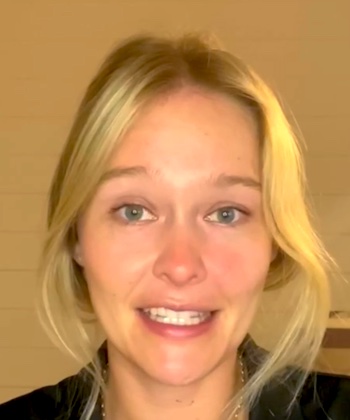
A Maori haka dance
Morgan (
New Zealand
 )
)


Haka, a ceremonial dance in Maori culture – Morgan’s goosebump moment
“Hello! I am Morgan and I come from New Zealand. My goosebump moment was when I first experienced a traditional Maori haka. A group of visitors along with myself were spending the day at a Maori village. Inside of this village, is a marae or a traditional and sacred meeting house for the local tribe. In this instance, the tribe welcomed us onto the marae with a haka. The haka is a type of dance, but it is so much more than that. The power and energy that was conveyed through the haka was truly emotional and touching. I remember experiencing the power of their ancestors through their dance and it felt like an incredible moment that was shared between the guests and those that were performing the dance. The haka is something that is truly amazing, and I really hope that one day you get to experience it.”
A celebration of life
The haka is a type of Maori ceremonial dance or challenge. The haka is usually performed in a group and typically represents a display of tribal pride, strength and unity.
Some of the haka actions include slamming the feet, protruding the tongue, and rhythmic body clapping to accompany loud chanting. Haka lyrics often poetically describe ancestors and events in the tribe’s history.
But how was this tradition born? The Maori legend that describes the origin of the haka paints it as a celebration of life. The story goes that Tama-nui-te-ra, the sun god, and his wife Hine-raumati, who personifies summer, had a son named Tane-rore.
On hot summer days, Tane-rore danced for his mother, making the air stir. This quick and agile movement was the basis for all haka.
When is the haka performed?
Traditionally, the haka was used on the battlefield to prepare warriors mentally and physically for battle, but it was also performed when groups gathered in peace.
Today, the haka is still worn during Maori ceremonies and celebrations to honor guests and show the importance of the occasion. This includes family events, such as birthdays and weddings.
Haka is sometimes performed at weddings as a show of respect, to show reverence to the couple and their guests, or to mark the important milestone. At weddings, women can also join in the performance of the haka.
The haka is also used to challenge opponents on the sports field. New Zealand’s rugby team, the All Blacks, perform the haka before every match, in an impressive display of strength and physical prowess.
The All Blacks use ‘Ka Mate’ as their haka, which was composed in the 1820s by the Maori leader Te Rauparaha. The lyrics to this particular haka dance have become famous around the world since it became part of the All Blacks’ pre-match ritual.
The Black Ferns, New Zealand’s women’s rugby team, are also famous for performing a vigorous haka.
Maori culture
Maori culture is an essential part of life in New Zealand, and its influence is seen in everything from cuisine and customs to language.
The Maori are the Tangata Whenua, the indigenous people of Aotearoa New Zealand. They came here over 1,000 years ago from Hawaiki, their mythical Polynesian homeland. Today, one in seven New Zealanders identifies as Maori. Its history, language and traditions are central to New Zealand’s identity.
Experience Maori culture by visiting a marae, watching a carving or weaving demonstration, or learning about fascinating myths and legends from passionate Maori guides.
More about the Maori haka dance:

Rate This Goosebump Moment